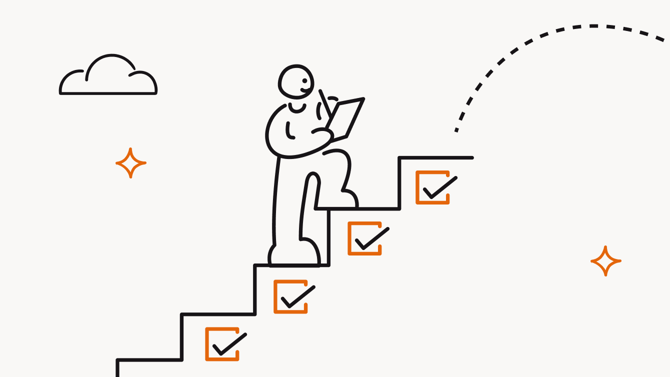Streamline, organize, and automate your onboarding process like magic.

What's in this article
The first interactions potential new employees have with an organization usually occur through a company’s website. It is also a great platform to effectively communicate their employer brand, values and spirit in order to capture a candidate’s attention and prompt their interest in applying to work for them, helping tap into the first steps of the candidate journey—the last step being onboarding.
And so, in many ways, providing a full and genuine onboarding experience begins as early as the recruitment and interview process. That said, it also continues on long after the hiring itself is done—and for the many months that follow.
Good onboarding practices play a key role in creating employee engagement for newcomers—and there is a significant correlation between employee engagement and employee performance within a company.
Based on research from Harvard Business Review, a positive onboarding experience can greatly enhance the integration and training phase, with the potential of bringing newcomers up to speed by 50% faster than the average and maximizing productivity. A positive onboarding experience is important for both short and long-term employee dynamics—ultimately benefiting an organization’s continued financial and structural stability.
To help simplify your life (and maximize your time), you’ll find below easy-to-follow onboarding checklists, outlining the best practices for all phases of onboarding within the first year. For more examples, check out our template library!
The First Day Onboarding Checklist
First impressions are lasting impressions, so it’s crucial to make the first day count and for newcomers entering a company to start off on the right foot. The goal is to create an engaging onboarding experience, making the newcomer feel at ease and welcomed.
Five key steps and activities that will help ensure the best first day:
Step 1 | Welcome Coffee and Office Tour
- Schedule a morning coffee date with the HR point-of-contact upon arrival;
- Give a tour of the office and facilities (or of your social platforms if your team works remotely);
- Organize a special team welcome event department meet-and-greet;
- Introduce the newcomer to department heads, teams and colleagues;
- Review information about the employee handbook and answer questions;
- Go over the first week’s schedule and expected work hours;
- Show them to their environment and give them their welcome package.
Step 2 | Set Up The Newcomer’s Desk and Equipment
- Grant office access;
- Help newcomer set up their equipment and liaise with the IT point-of-contact;
- Provide newcomer with necessary supplies;
- Provide instructions for using company softwares and tools.
Step 3 | Important Documents
- Do an overview about employee compensation & benefits;
- Prepare a brief presentation regarding work policies and procedures;
- Explain company safety and security policies;
- Share necessary HR forms and contracts to sign;
- Review code of conduct and ethics;
- Allow time for questions.
Step 4 | Company Introduction
- Prepare a company business presentation including an industry overview;
- Briefly review the company’s history;
- Explain the business mission, vision and values;
- Highlight your company goals and objectives;
- Explain newcomer’s impact within part of the organization.
Step 5 | Meeting With Newcomer’s Manager
- Review company’s organizational chart;
- Revise in detail the role and job description;
- Set goals for newcomer’s first few months;
- Discuss employer expectations;
- Discuss newcomer’s professional development and opportunities within the organization;
- Organize a meeting with the CEO.
The First Week Onboarding Checklist
To ensure this first week runs smoothly, provide a clear structure for them to follow.
Below are some of the most recommended best practices companies should apply to support newcomers during their first week. They include, but are not limited to:
- Daily check-ins with newcomer to make sure they are settling in;
- Schedule weekly meetings to review employee tasks and answer questions (rituals);
- Share and go over employee’s tasks and projects here on out;
- Schedule relevant trainings and recommend useful readings and resources;
- Ensure newcomer has been introduced to key colleagues;
- Introduce employee to other teams and departments;
- Organize and encourage them to join company social activities and gatherings;
- Recommend for newcomer to connect with company social media accounts.
The First Year Onboarding Checklist
There are many fun and creative employee engagement activities (we have tons of it in Workleap Onboarding, have a look) that managers can organize to foster a positive onboarding experience and engagement. Engagement helps increase feelings of belonging. A study by Harvard Business Review highlights that a high sense of belonging leads to a 56% increase in job performance along with a 50% decrease in turnover.
Employees who build a positive emotional tie with an organization have greater potential to become long-term, devoted members. A way to help promote positive sentiments within the workplace could be by organizing monthly team building activities, such as an off-site day outdoors with a picnic and kayaking, or creating virtual social events on Kumospace if your company is remote.
As the first year is the most critical in ensuring employee retention, here are a few key elements we recommend to implement:
The First Month
- Invite for newcomer to complete an onboarding survey;
- Conduct a progress review;
- Keep employee engaged by scheduling new and interesting trainings;
- Invite employee to join company social committees;
- Organize a team building activity (team dinner, karaoke or board game night).
The 3-Month Mark
- Continue sharing constructive feedback and request feedback in return;
- Review progress reports and assignments;
- Set a structure for upcoming assignments;
- Ensure newcomer are completing the required training;
- Schedule bi-weekly check-in meetings to ensure newcomer remains supported;
- Discuss performance goals;
- Conduct an informal performance review;
- Organize a team building activity: An adventurous day of zip lining.
The 6-Month Mark
- Schedule a mid-year performance review;
- Discuss newcomer’s growth and 6-month progress;
- Set end-of-year goals and objectives;
- Ensure newcomer remains motivated and equipped to complete tasks.
- Organize a team building activity: A group cooking course.
The 1 Year Anniversary
- Schedule a yearly performance review;
- Recognize employee’s accomplishments and positive impact during their first year at the company;
- Discuss career goals and future professional path for the newcomer;
- Discuss new projects and plans for the upcoming year;
- Review company rewards and compensation policies;
- Open the floor for Q&A or comments;
Implementing good practices for onboarding is a fundamental piece in the talent management puzzle. As we previously mentioned, the process is directly linked to employee retention and is a proven investment.
The recruitment and interview process is the starting point for a company to build strong relationships with candidates and showcase employer brand, but it is equally (if not more) important that these relationships should further be nurtured throughout the first 12 months of employment.
Great onboarding is, simply put, a structured action plan highlighting the steps and procedures to follow during the early stages of a newcomer’s onboarding experience, playing an important role within employee retention strategies.
However, it is important to note that a strong onboarding experience goes beyond lists and forms. Remember that it is about making newcomers feel welcomed, immersing them into the company culture and fostering real connections.
Although a newcomer’s onboarding experience typically ends around the one-year mark, the underlying principles of fostering employee engagement should always remain present.
Structure and automate your onboarding journey so newcomers hit the ground running.




